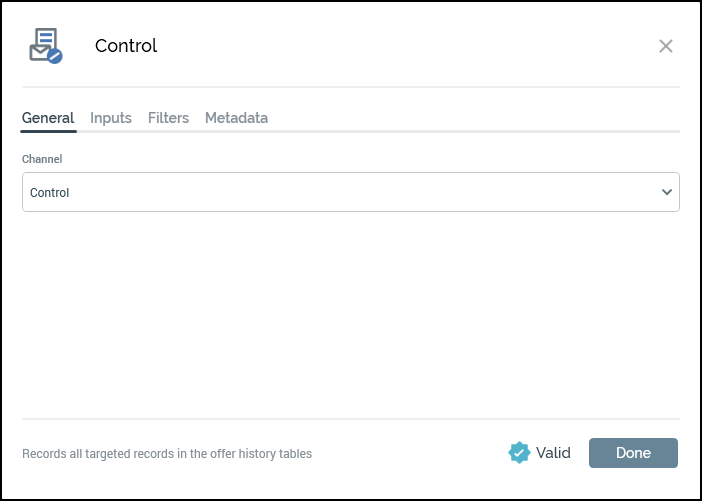Winback (Last Open Date)
Overview
This campaign template selects all records that do not have an Account Response Date within the last 90 days of execution that are also opted into email. There are a few different parts to the template that when put together in an interaction will allow you to send out account communications. This topic breaks down each of the parts of the Winback (Since Last Open) campaign.
Use this campaign template to target all records that do not have an Account Response Date within the last 90 days and that are opted into receiving emails.
GRS - Winback (Last Open Date)
This template is located in RPI/Interactions/RPI Campaign Templates/Email/Winback Campaign/Since Last Open. The interaction is where the selection rules and audience are put together to allow the RPI user to send the final selected group of records out of the system.

Batch Audience: This process block is where the user-created audience is assigned and run at the time of processing. We will dig further into the audience set up in the next section, but this is just a look at how this process block would be configured to run an audience.
Audience: In this example, an audience has been assigned, which is “GRS - Winback (Since Last Open)”. We look deeper into this audience further into this document.
Placeholders: These are attributes that have been created to simplify updating criteria within the selection rules within an audience. This configuration lets you make these changes in one place without needing to go into the underlying audience. Click Manage placeholders to access or change this option any time you use this template. The second screenshot shows that there is only one placeholder for the initial audience, which is looking for Business Unit Code.
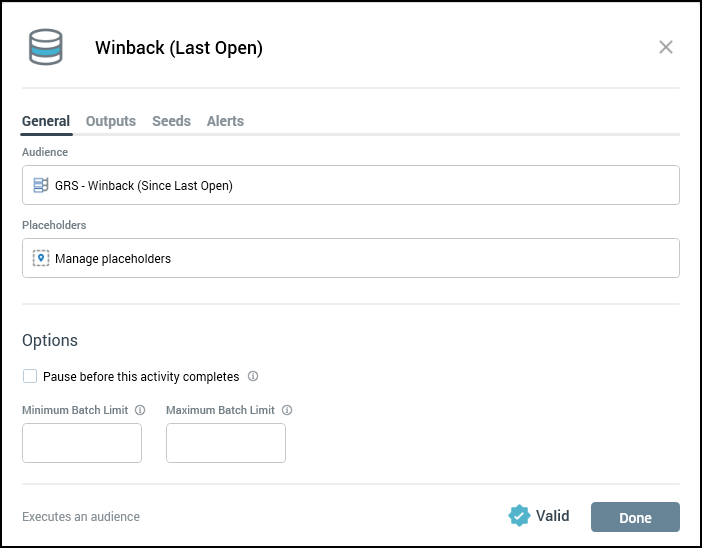

Audience: GRS - Winback (Since Last Open)

The first process block within the audience is a filter block. This filter block allows you to assign a selection rule to select certain records based on their information within the database. The configured selection rule in this filter block is looking for records with the selected Business Unit Code, which is being set using a placeholder as mentioned above.
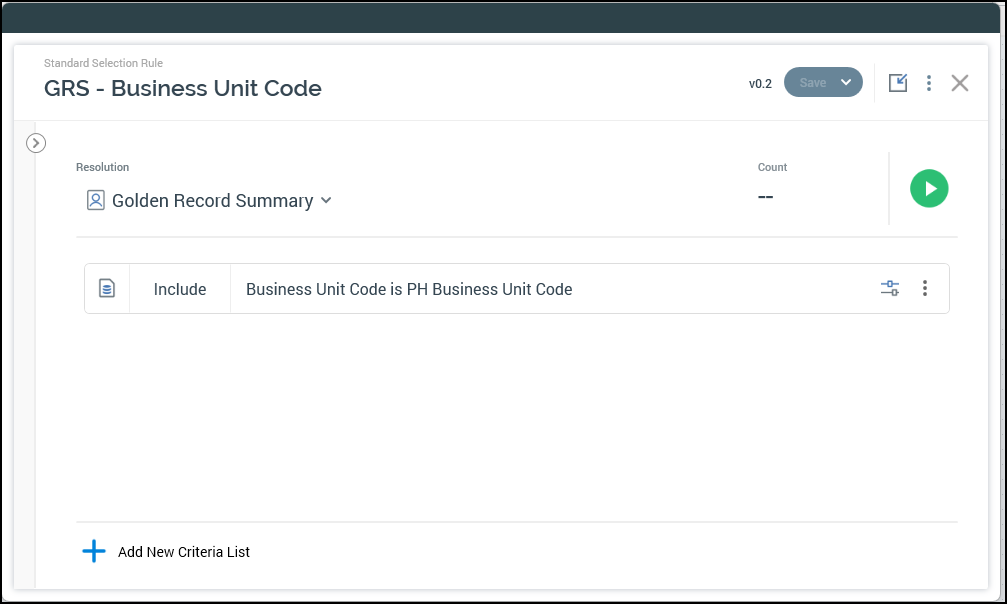
The second process block is another filter block, which is using a selection rule to select records based on their
auth_codewithin theContact_Auth_Email_Summary.
When creating this audience, both of the provided rules could be combined into one selection rule, but splitting them out gives you the ability to see the count breakdown at each step.

The third process block is also a filter block. This filter block is being used to select records that have a last account response 90 days ago. This rule is using the
Last Account Response Datefield from the Customer Account BU Summary table.
This is the aggregate logic behind the Last Account Response field:
max(campaign_event_datetime) from dbo.CAMPAIGN_EVENT_CUSTOMER_MAP where CAMPAIGN_EVENT_CUSTOMER_MAP.individual_business_unit_id = main_individual_business_unit_id
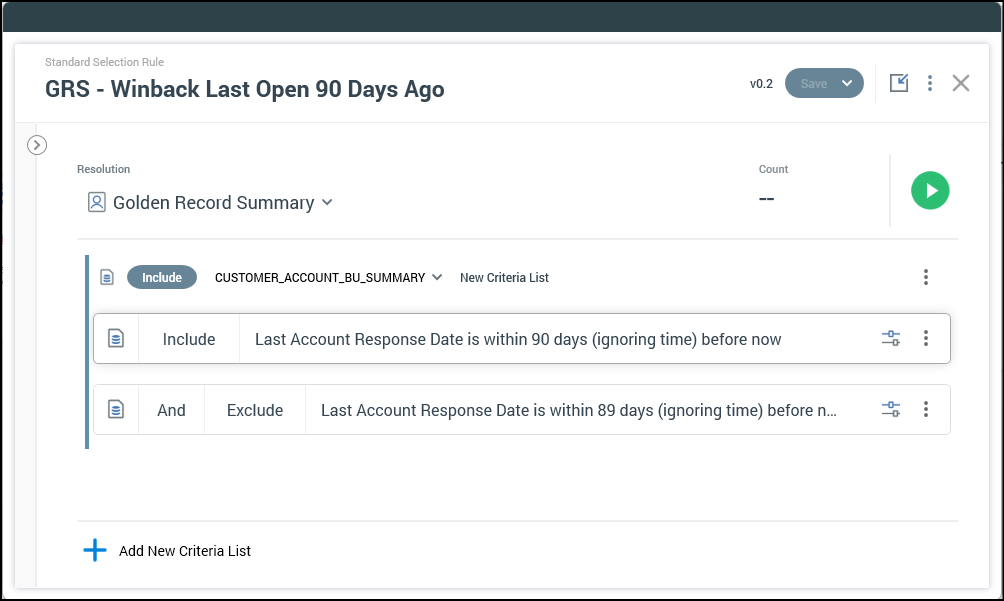
The fourth process block in the audience is a suppression block, which takes all of the qualified records from the previous selection rules and removes records based on information about these records in the database. The suppressions that have been applied to this campaign are based on these selection rules.
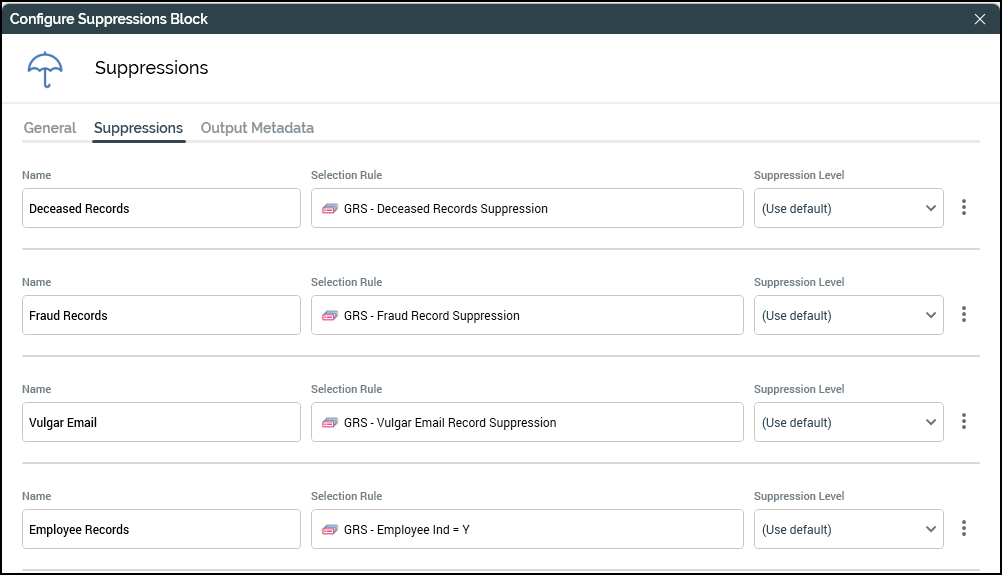
Control: This process block is used to either execute an offer, generate an export file, or in this case write to a control table. This process will work with any of those options, but this example uses a control group.
